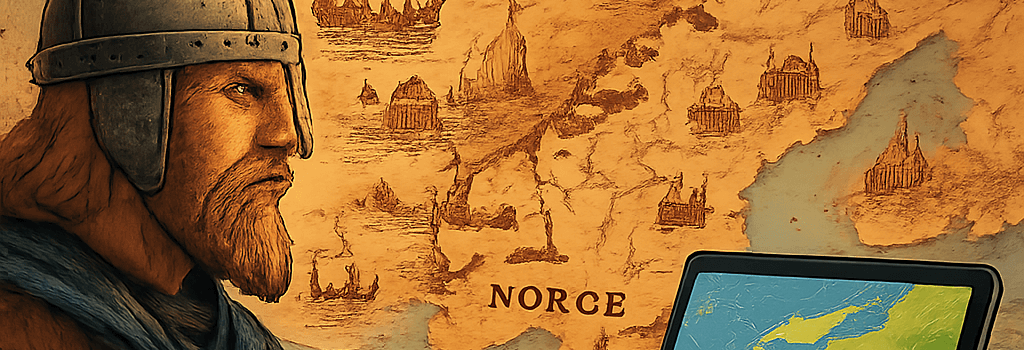Mapping Viking Havens: Advanced Tech in Norway’s Ports

Archaeologist Greer Jarrett has recently pinpointed four probable small ports—often referred to by the Vikings as “havens”—along Norway’s rugged western seaboard. By leveraging cutting-edge remote sensing, maritime GIS layering, and underwater sonar surveys, Jarrett’s team has begun to reconstruct ancient seafaring routes once dominated by Norse longships.
The Four Identified Havens
Vestland Inlet (60°12′N, 5°18′E)
This sheltered bay shows distinct shoreline modifications consistent with Viking-era quay construction. Side-scan sonar surveys at 600 kHz resolution revealed submerged timber remains, while drone-based photogrammetry produced 3D models with sub-5 cm vertical accuracy.
Nordfjord Anchorage (61°58′N, 5°29′E)
High-frequency magnetometer sweeps uncovered iron nails and possible rivets matching 9th-century shipbuilding signatures. A 12-element UAV LiDAR array captured over 200 million points in 48 minutes, highlighting subtle earthworks.
Sogndal Fjord Mouth (61°14′N, 7°06′E)
Geophysical profiling identified a compact harbor basin. Seismic sub-bottom profiling at 3.5 kHz confirmed sediment layers disrupted by man-made excavation.
Hordaland Backwater (60°24′N, 4°58′E)
Shoreline LiDAR and coastal erosion models suggest a formerly deeper channel—ideal for draught-heavy knarr merchant vessels. Surface-penetrating radar (GPR) detected buried wooden piles at depths of 1.2 m.
Methodology and Technical Specifications
- Remote Sensing Platforms: DJI Matrice 300 RTK with Zenmuse L1 LiDAR, 60° field of view, 240,000 points/sec.
- Sonar Equipment: GeoAcoustics 600kHz side-scan sonar, 35 cm resolution, GNSS-integrated for real-time positioning.
- Data Processing: ESRI ArcGIS Pro v3.1 for geospatial analysis; Python scripts leveraging GDAL, PDAL and OpenCV for point-cloud filtering.
- Underwater Survey: Teledyne Benthos chirp sub-bottom profiler; detection depth 30 m below seabed.
“By integrating multi-sensor datasets, we can visualize Viking maritime infrastructure with unprecedented precision,” said Dr. Ingrid Lunde, maritime archaeologist at the University of Bergen.
Maritime Navigational Techniques in the Viking Age
Viking navigators combined solar compasses, star positions, and coastal pilotage. Recent experimental archaeology projects have recreated a Solbue crystal compass aboard replica longships, achieving estimates within 3° of true north. Jarrett’s team is collaborating with nautical historians to overlay ancient wayfinding methods onto modern GIS nautical charts.
Technological Innovations in Underwater Archaeology
Recent advances in machine learning have allowed automatic classification of sonar returns. A convolutional neural network trained on 5,000 labeled sonar images now flags potential wreckage and timber debris with 92% accuracy. Jarrett plans to open-source this model on GitHub under an MIT license.
Comparative Analysis with Other Viking Sites
When compared to Roskilde’s shipyard remains and the Hedeby harbor site, Norway’s havens exhibit smaller footprint but higher-quality timber revetments. This suggests a network optimized for quick repairs and discreet shelter rather than mass ship production.
Expert Opinions and Future Directions
- Prof. Einar Skarås (Norsk Maritimt Museum): “These findings refine our understanding of Norse coastal logistics and highlight the role of micro-ports in Viking expansion.”
- Dr. Sofia Martinez (Digital Heritage Lab): “The integration of AI with archaeological fieldwork is transforming site discovery and preservation.”
As cloud-enabled collaboration and advanced hardware continue to evolve, archaeologists like Jarrett will map ever more nuanced details of Viking maritime networks, bridging millennia-old history with 21st-century technology.